Monster Hunter is a quiet behemoth. For a long time, it was one of Capcom's biggest franchises and one of its more obscure series because the multiplayer-focused hunting game never quite took off overseas the way it did in Japan. That all changed with Monster Hunter World, which created the most accessible version of the game and helped bring an entirely new audience to the wonderful franchise. The Nintendo Switch-based Monster Hunter Rise had its appeal, but fans have been waiting a long time for a full-throated follow-up to Worlds. Thankfully, Monster Hunter Wilds is everything a Monster Hunter fan could want.
The plot in Monster Hunter Wilds is straightforward. Your hunter is part of an expedition to the mysterious Forbidden Lands, where the hunter finds a young boy named Nata, who claims that his tribe was attacked by a monster. Naturally, this is catnip to the people outside the zone, and they launch an expedition to discover the truth about the Forbidden Lands — by smashing monsters to bits.
Wilds is one of the more enjoyable stories in a Monster Hunter game, but it's still a loose excuse to justify fighting a whole bunch of monsters. I enjoyed that everyone, including your hunter, is an actual character. Having Alma instead of "Handler" and Gemma instead of "Forgemaster" makes them feel more like characters. I also liked my hunter having actual lines of dialogue and dialogue choices. I'm sure it might bother some people who prefer otherwise, but I think it was a big improvement on making the relatively thin Monster Hunter plot feel engaging.
The biggest difference in Wilds from Worlds is the seamlessness of the game. It isn't a true open-world game in the sense that you can go anywhere, but it's divided into a series of very large biomes that you can explore. The traditional hub areas are still present, but they're more directly connected so you can go from the base to the wilds. You can also wander around the wilds, with new systems that allow you to instantly jump into a traditional hunt once you encounter a monster and attack it a few times. I loved this feature since it meant that if I found a rare monster while out and about, I wasn't locked into returning to base before I could fight it. You can also set up minicamps around the map to serve as resupply and fast-travel points; they provide a lot more flexibility for staying out, but these camps are at risk if monsters attack.
The environments are large and fun to explore. They're not as dense as they were in World, but they make up for it by being freer and more dynamic. Not only can you encounter different monsters and life, but the weather can shift. Different weather can have positive or negative effects — for example, don't fight an aquatic monster in a downpour — but they also affect the behavior of the creatures and environment. During a fallow period, you might find fewer resources, but that also means that monsters are more likely to fight one another, so you can use a monster's hunger to your advantage. There are even monsters that will only appear during certain conditions. It's a neat feature that adds more life to the world.
Despite these changes, the basic Monster Hunter loop continues intact. You'll take on missions, hunt monsters, and collect their body parts so you can craft better gear to hunt bigger monsters. Capcom hasn't messed with the formula much — and for good reason. Like the other games in the series, there's an in-depth endgame where you'll face more difficult monsters, so there's little concern about running out of content when you finish the story.
Monster Hunter Wilds brings back all of the classic Monster Hunter weapons, but most of them have seen some kind of adjustment. As a layperson to some of these weapons, it felt like the weapons were adjusted to have a higher skill floor and a higher skill ceiling. The bow was my weapon of choice. Thankfully, gone is the need to craft countless types of ammo, but you have a new weapon gauge. You can use this gauge to apply coatings to your weapon or to use the new tracking arrow that lets you temporarily focus all of your attacks on a specific part of the monster. This made it much easier to play, and it also added a new resource to manage. Careless use of the tracking and coating would mean I'd be stuck using an unmodified bow until I could replenish. Overall, I found this to be more dynamic and fun to play than in World.
One of the largest changes to the game comes in the way you can interact with monster's attacks. These come in the form of offset attacks, power clashes, and the new wounds mechanic. Offset attacks are countermoves that can interrupt a monster's attack, while power clashes are available to weapons with a guard feature. After a few perfect guards, you can engage in a button-mashing test of strength to knock over the monster. They're extremely cool moves that reward aggression and precise timing.
The wounds mechanic is more complex. When damaging enemies, you have a chance to open a wound on the monster. When you attack the wounds directly, you'll briefly stun the monsters, inflict a nice chunk of damage, and transform the wound into a scar that can't be wounded again. While you can do this manually, each weapon also has a new Focus Strike option, where you hold down a button to target the wound and then unleash a high-damage strike. Each weapon has its own Focus Strike, and many directly interact with the mechanics, like the insect glaive gathering free essence or the bow being able to lock on to multiple wounds at once to unleash massive damage.
The wounds mechanic feels really good from a gameplay perspective. Other games have tried similar things to provide big flashy moments, but wounds are limited enough that they don't feel overpowered. They feel common enough to seem like a natural part of the toolkit. When playing solo, it's a delight to be able to pop a wound in a rush to slow down an enemy. My largest concern is that in high-end gameplay, it might cause some frustration when your allies pop wounds before you can, as some weapons clearly rely on them more than others. It's a minor concern, especially since all that matters is the monster going down.
The biggest revolution for me was the Seikret. This oddly adorable bird-lizard is your mount in the game, and it's a companion like your Palico. At the touch of a button, you can hop on and mount the bird to ride around the environment, similar to Rise's Palamutes. However, these convenient little birds can do a lot more. You can fight from your mount now, although it's more limited. This isn't particularly useful for weapons like the daggers or longsword, but for a weapon like the heavy bowgun, it's a genuine game-changer. You suffer a damage penalty and limited move set, but being able to shoot and move at the same time makes some monsters much easier to deal with. You also can access your supply pouch from the Seikret, so it's easier to resupply and restock mid-fight.
The biggest game changer is that you can carry a second weapon and swap to it. This might sound small, but it's difficult to express how much more fun it makes the game. Being able to carry a bow with a variety of status-causing arrows to weaken an enemy and then swap to a heavy-hitting hammer encourages a more diverse play style. While I always favored the bow in Monster Hunter, I found myself using melee weapons a lot more because I had the choice. Of course, you can also do things like carry two swords with different elemental properties if you really want to live the longsword life.
The Seikret is designed to auto-guide you toward quest targets if you don't press any buttons, but you can take manual control by moving with the stick. I originally found this to be awkward, but buried deep in the menus (the second page in controls) is an option that makes your Seikret control just like a hunter. Doing that was a genuine revelation that altered the ease of play. I mention it mostly as a warning to newcomers, so they can avoid my frustration.
Overall, Wilds definitely nailed what it needed to. The game is absurdly fun to play, and every weapon I tried felt better when compared to my experience to it in World or Rise. It feels extremely good to play on a basic level, and while the Focus mechanics can sometimes feel too powerful, they also provide moments of feeling cool. Charge Blade is an absolute delight when you nail its mechanics, and I've never much cared for it in previous games.
My one concern is that the performance isn't perfect. It's smooth enough during gameplay, but I noticed some hiccups and hitches while playing, which is surprising considering the raw visuals don't feel like that huge of a step up from Worlds. Thankfully, these felt relatively minor in the long term, and after I was deep into a hunt, I barely noticed them. The animations and general feel of the game are excellent, and some of the new monsters are absolutely gorgeous in their gruesome glory. The music is excellent as always, and the voice acting does a good job with some rather stilted dialogue.
Monster Hunter Wilds is a fantastic new entry into the franchise. For the most part, I feel like every new feature feels good and works well, and the monsters are certainly a delight to fight. The only things that might hold it back slightly are some performance issues, but even those don't get in the way of the core fun of smashing monsters, looting gear, and repeating. Fans of the franchise should have a fantastic time with this latest entry, and I hope it becomes a blueprint for future games in the franchise.
Score: 9.0/10
More articles about Monster Hunter Wilds


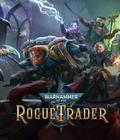
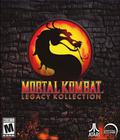
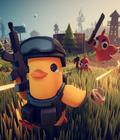
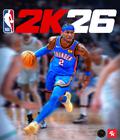
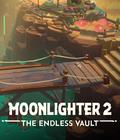
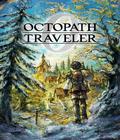
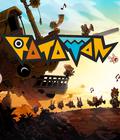
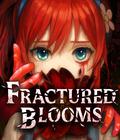

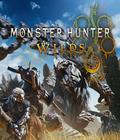 Monster Hunter Wilds is a brand-new entry in the Monster Hunter series where players join the ranks of a special Research Commission team investigating the Forbidden Lands.
Monster Hunter Wilds is a brand-new entry in the Monster Hunter series where players join the ranks of a special Research Commission team investigating the Forbidden Lands.




























